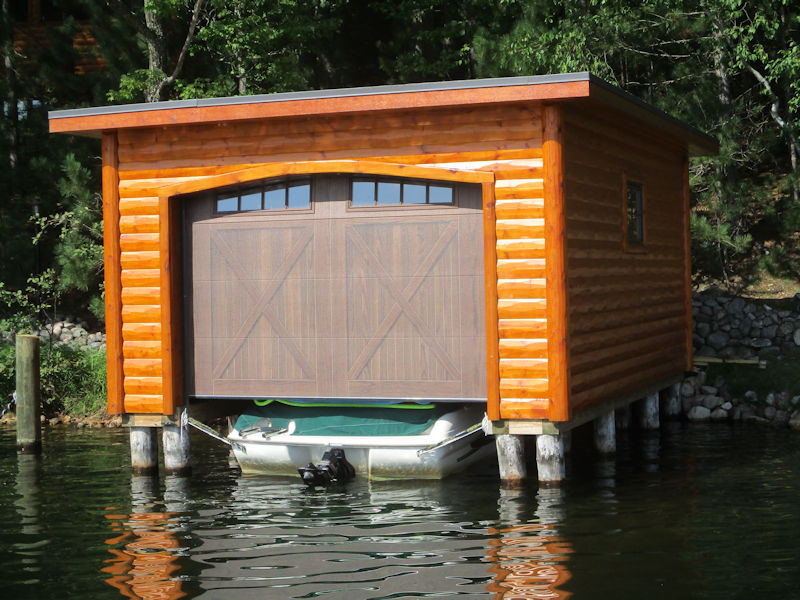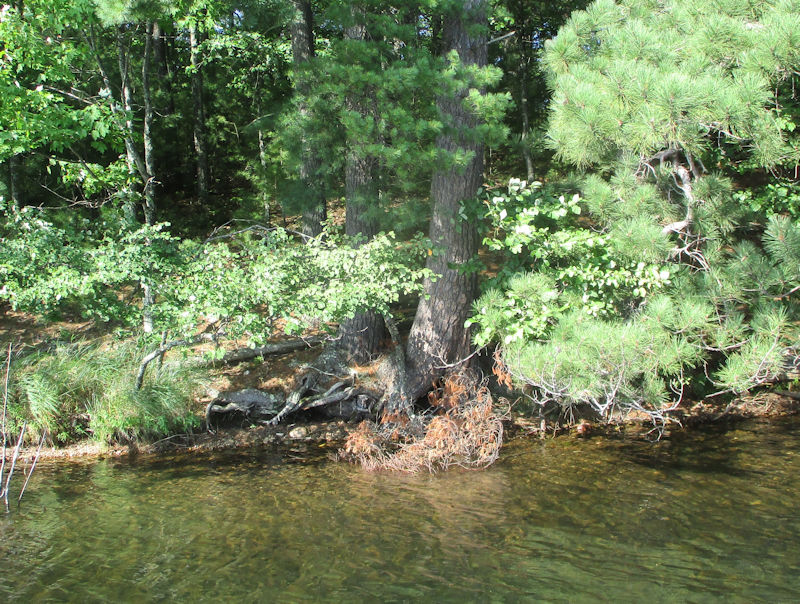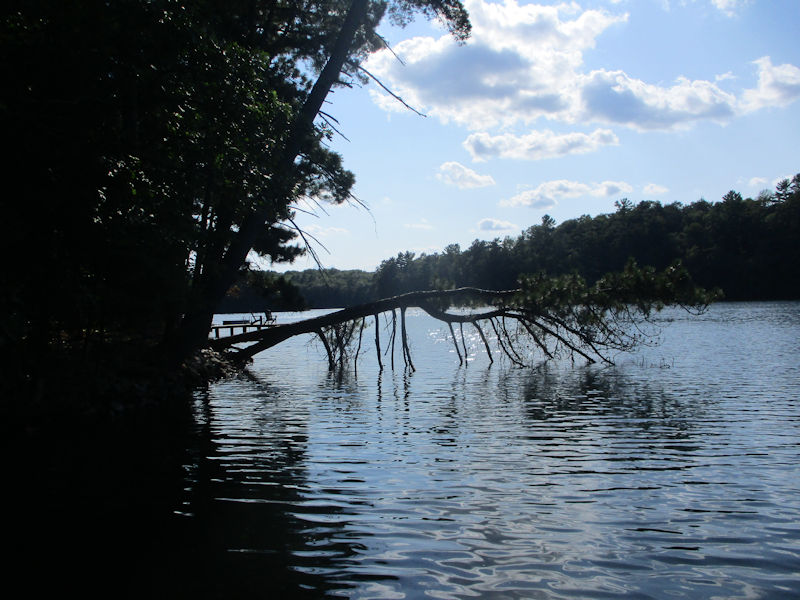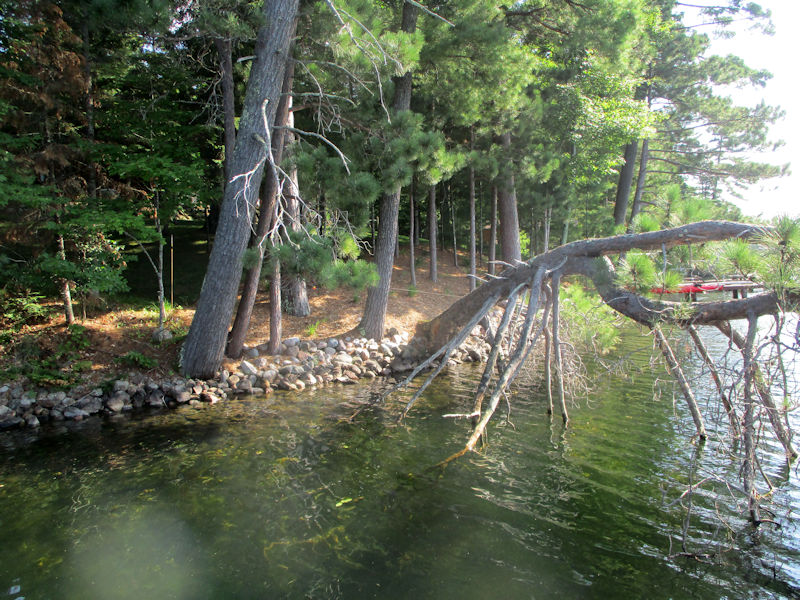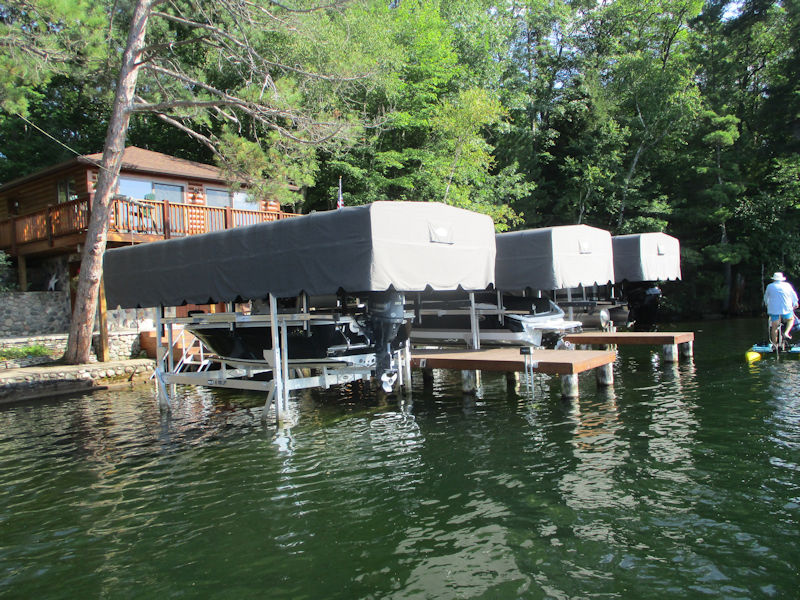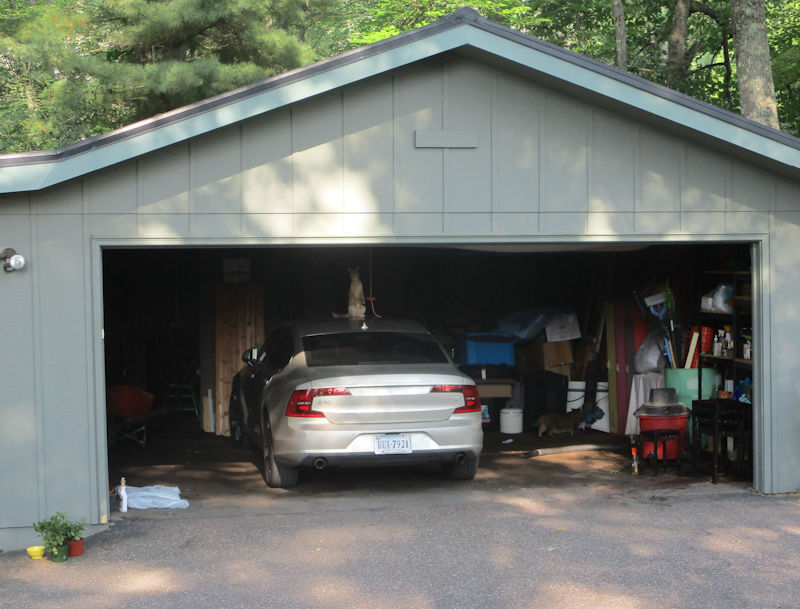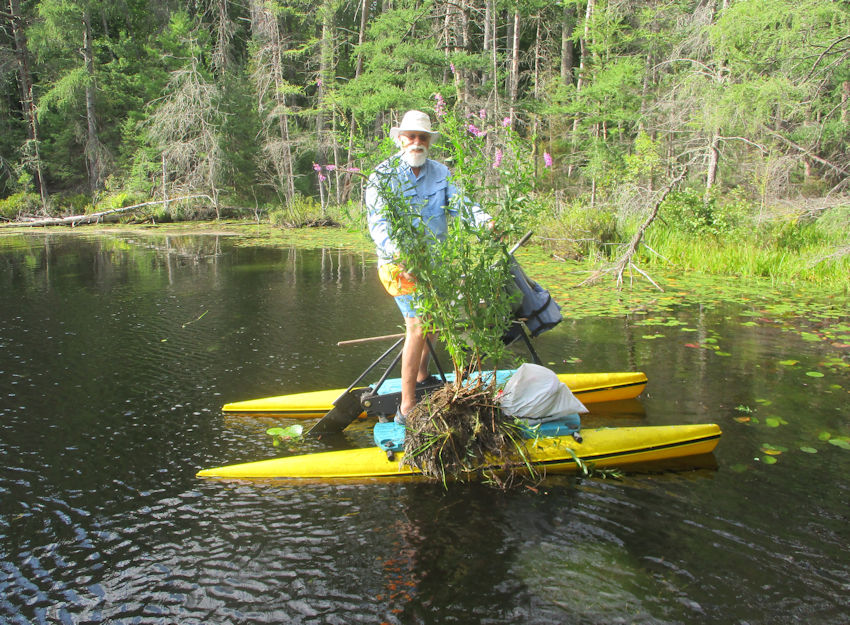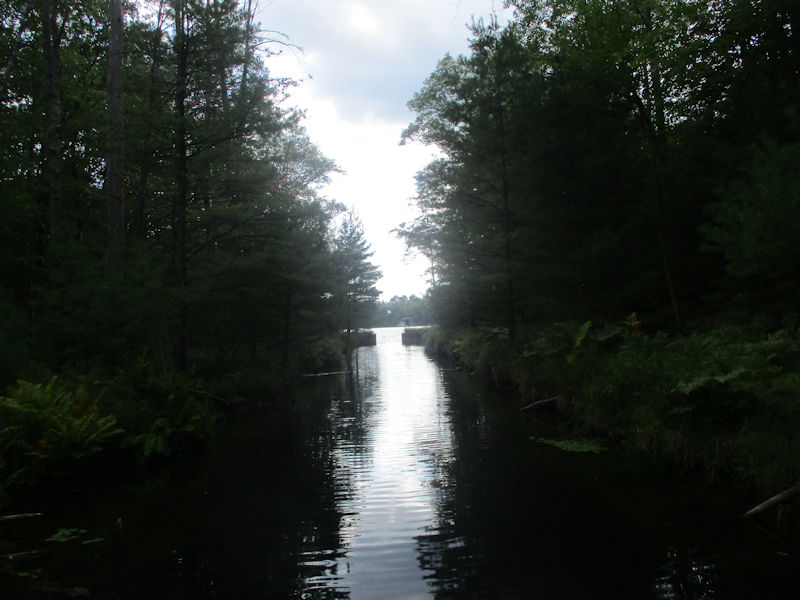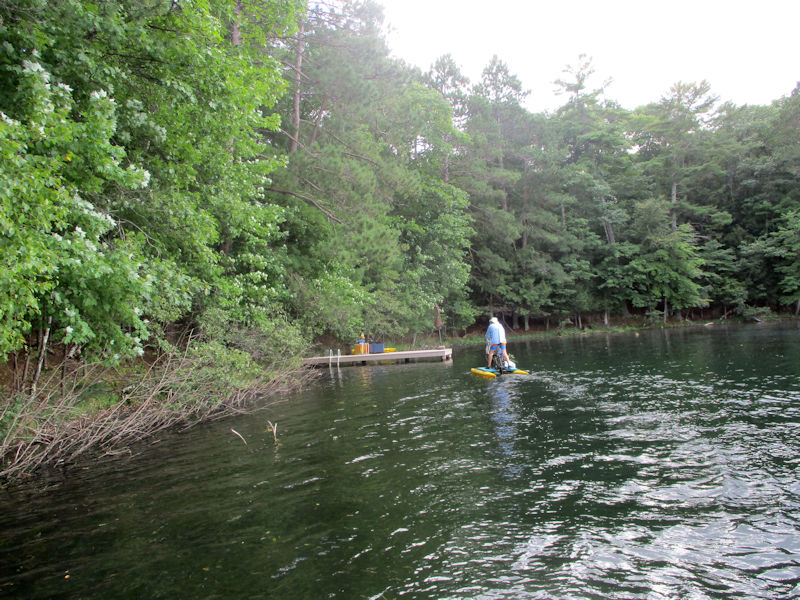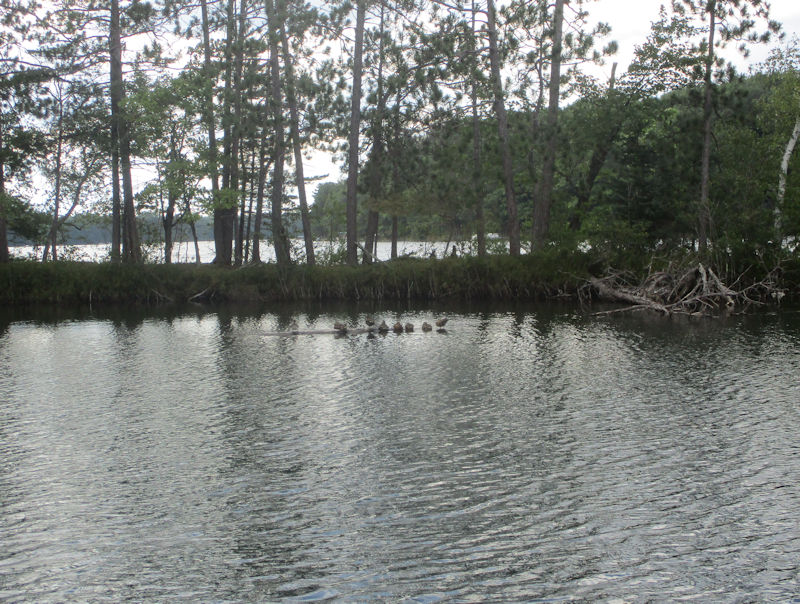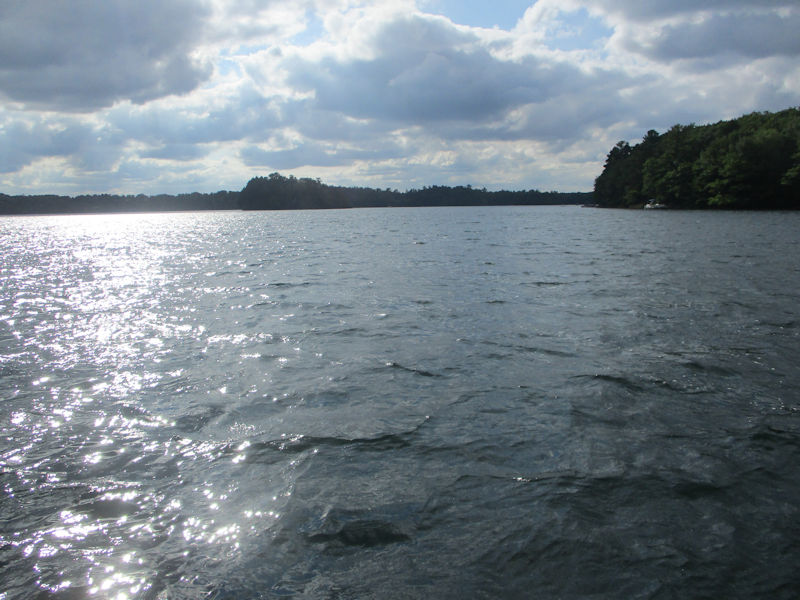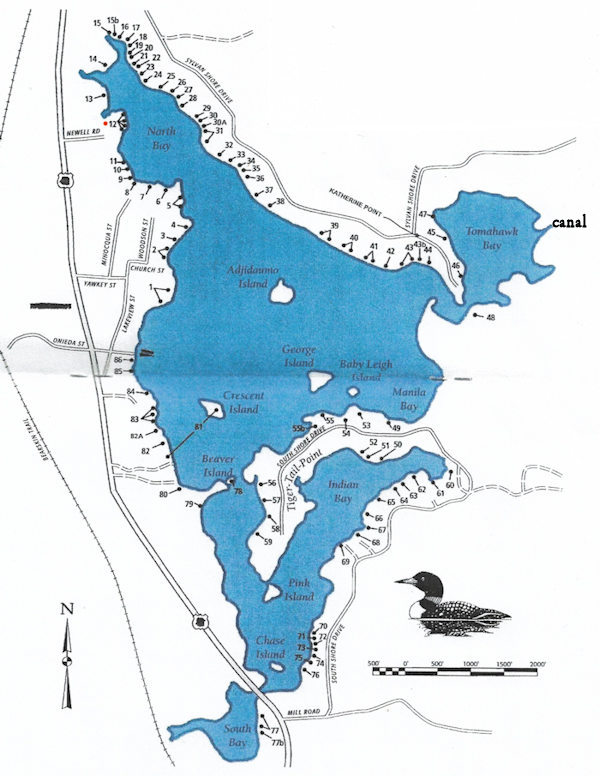You may not find this terribly rewarding unless you're included here, so this is a good time for casual and random browsers to turn back before they get too caught up in the sweep and majesty of the proceedings and can't let go.
It's just Choupette, weighing her chances of leaping up into the roof beams without disastering.
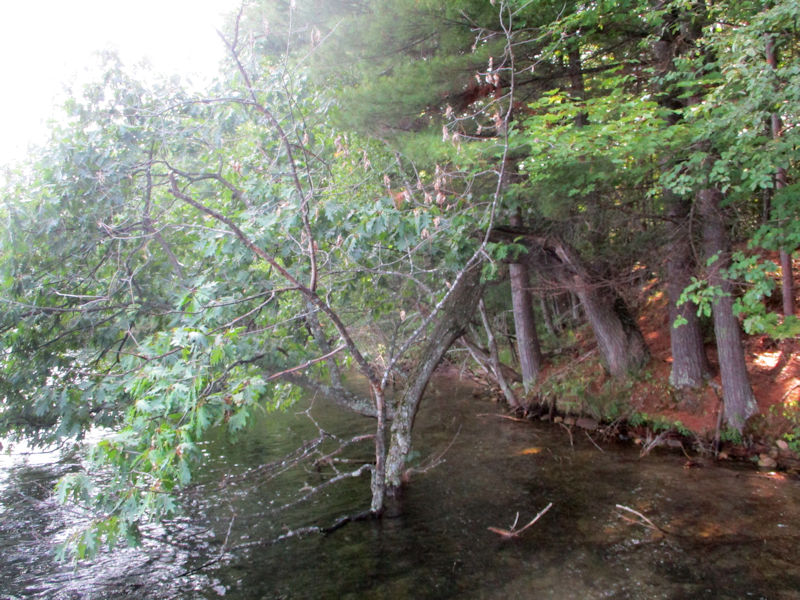
Another wonder of nature. A smashed up possibly lightningified tree that persists in thinking that it's really still alive.
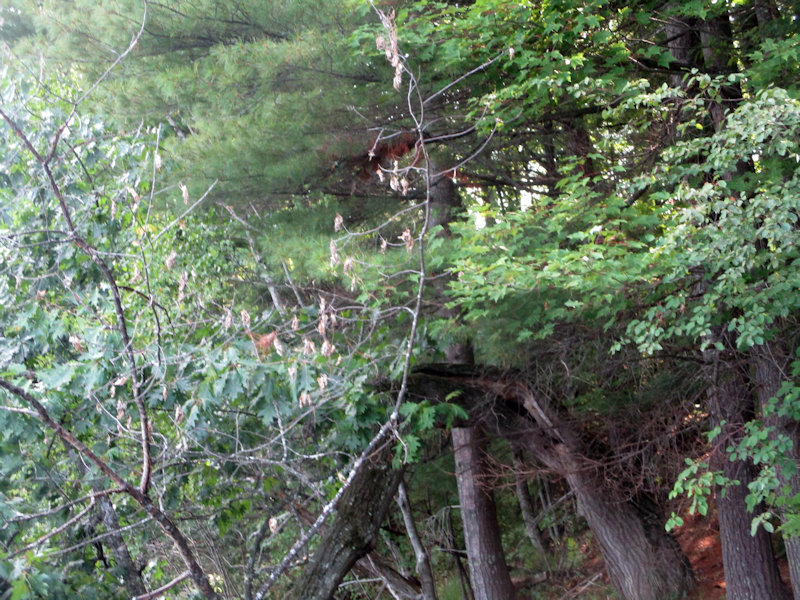
Eeww, a nasty break, and its top end is stuck down into the lake.
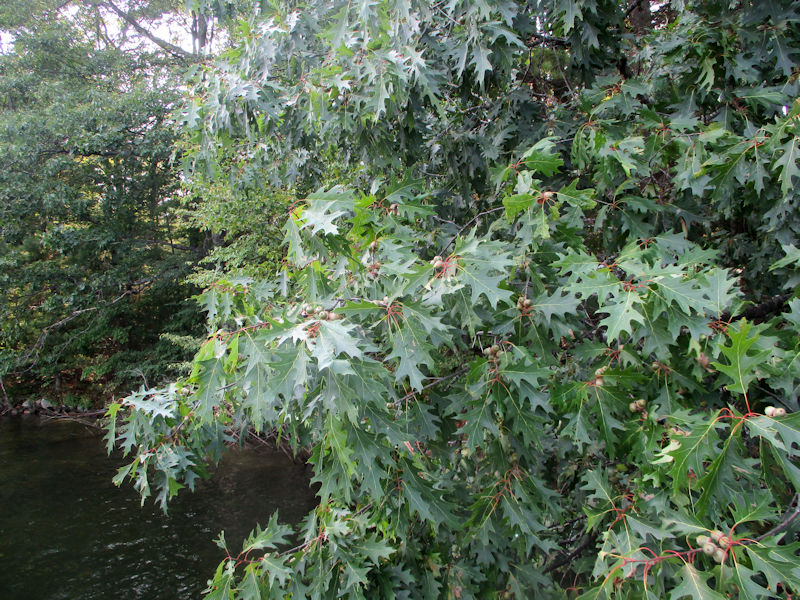
But it's got its leaves still on it, and new acorns just emerging for its future generations. The little oak tree that would not surrender.
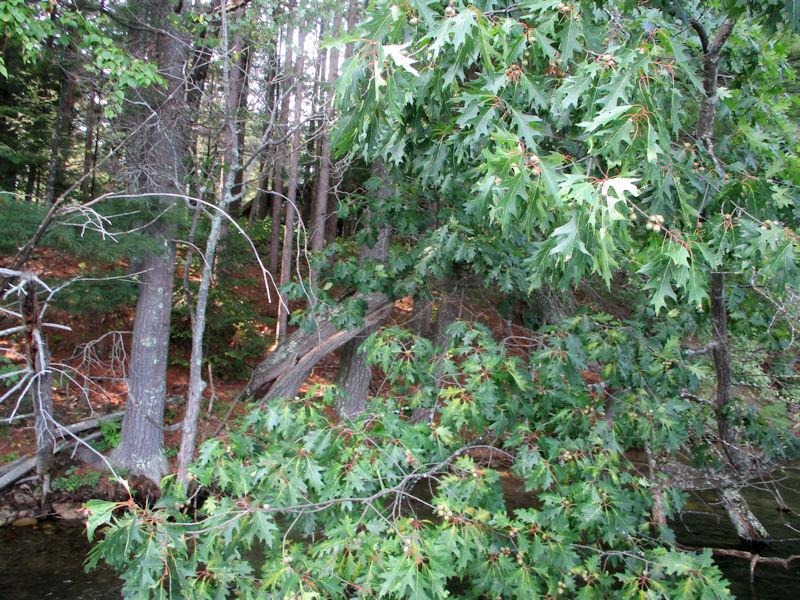
A very sad case. Someone should consider rescuing those acorns before it's too late.

There's no help for that patient. Think 'triage'.

We're just pedaling past one of the islands, admiring the way in which the waves are washing it down to its bare rocky bones.
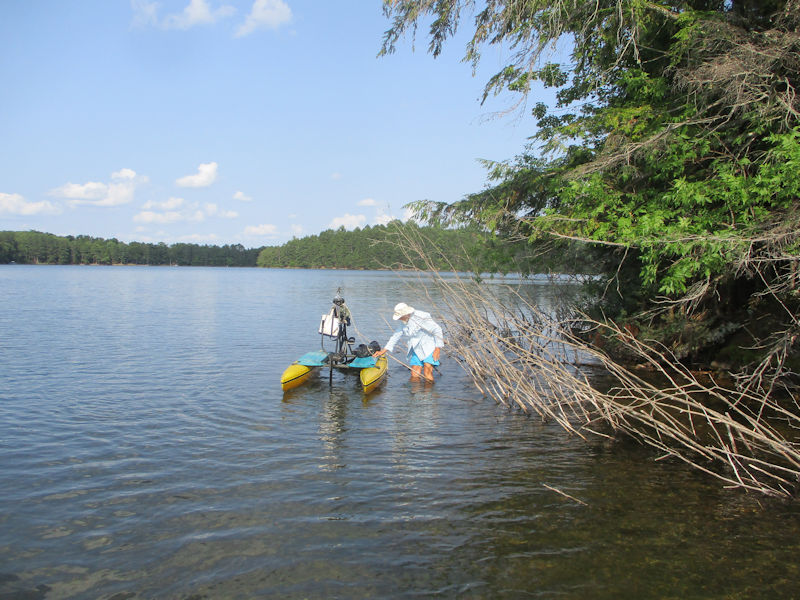
But there's still the purple loosestrife to consider, and Cousin Rob is mooring his hydrobike to squirm in through the punji-stick defenses of the dead tag alders.
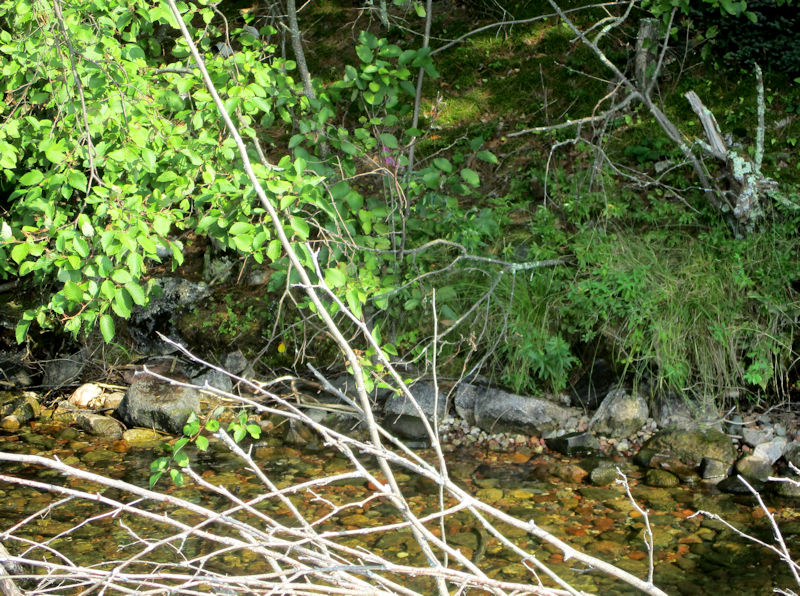
That's the target -- it looks unassuming, but each purple stalk can release over 400 million new invasive species-spawn into the lake. Something like that number, anyway; maybe 10,000. Or more!
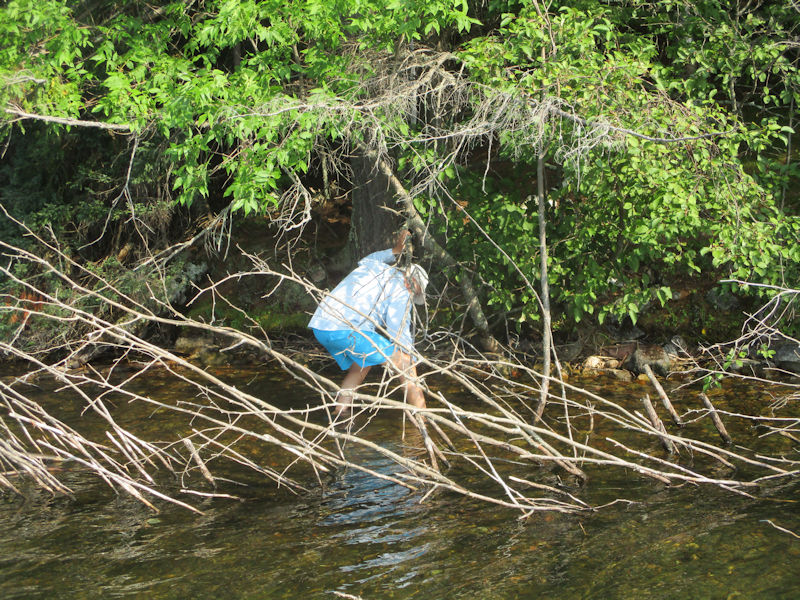
Cousin Rob is a dedicated foe of the dreaded loosestrife pest on this lake. And here's why:
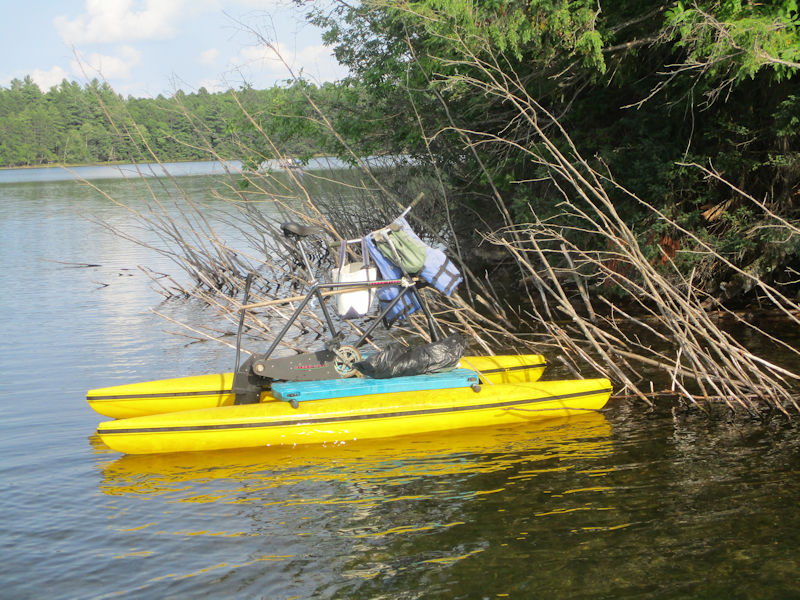
"Purple loosestrife (Lythrum salicaria) is a fast-spreading, tall Eurasian plant that grows primarily in wetlands and ditches, but can invade home gardens. It was introduced from Europe in the 1800s as a perennial garden plant. . . . [I]t is illegal to sell, distribute or cultivate this plant or its seeds in Wisconsin. Purple loosestrife has a wide tolerance of environmental conditions and spreads by seed as well as by aggressive rhizomes. Purple loosestrife can produce more than two million tiny seeds per plant. Seeds are easily spread by wind and water, remaining viable in the soil for many years. The plant also has a thick taproot with fibrous rhizomes that form a dense mat, making it difficult to remove. In addition, the insects and diseases that keep the plant’s population in check in its homeland are not present in North America. These factors allow purple loosestrife to spread rapidly through wetlands and other areas where it chokes out other desirable native vegetation and eliminates open water habitat that is important to wildlife." [Wisconsin Horticulture]
How's that for a letter of recommendation?
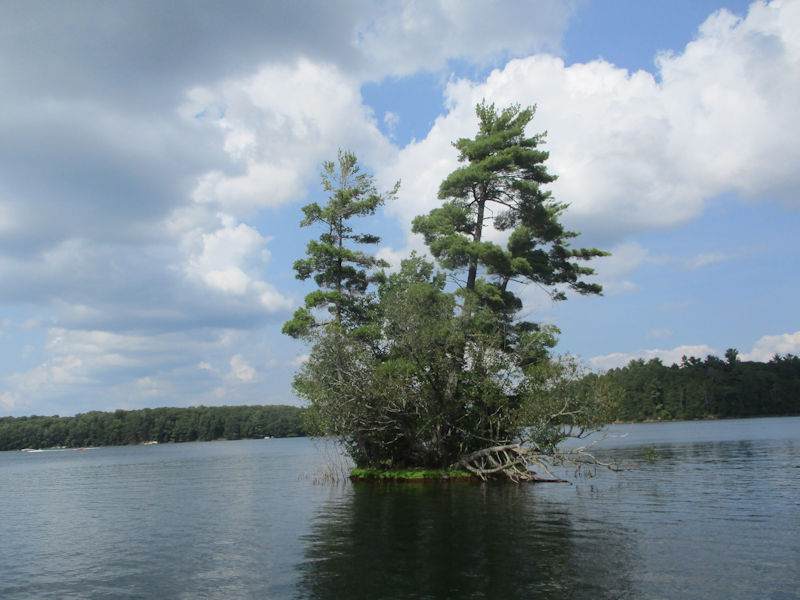
That's Baby Leigh (state property because someone ages ago forgot to pay the taxes on it)
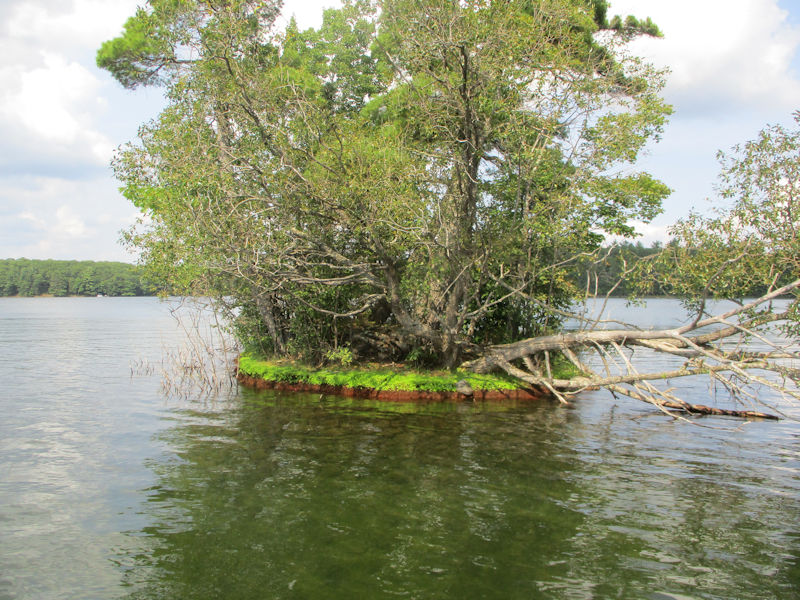
A fairly new casualty from that multi-trunk willow tree in the foreground
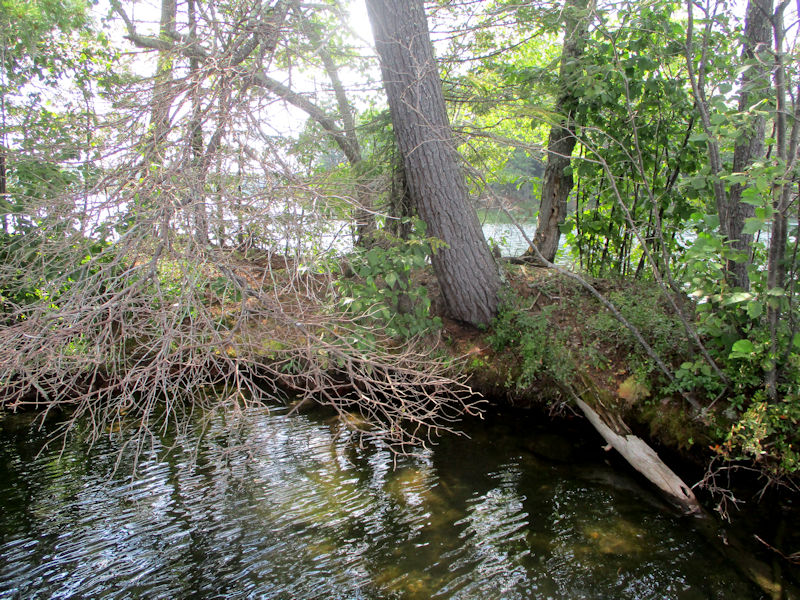
And a distressingly undercut soil base -- it might end up as a bare rocky reef in a few years if the Wake Boats carry on as erst they have begun.
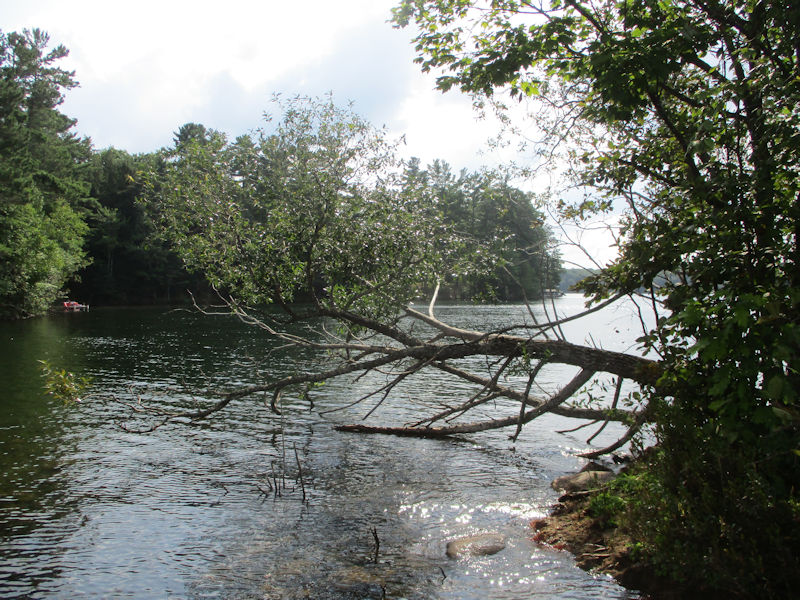
But even dead and dying trees can have their aesthetic moments.
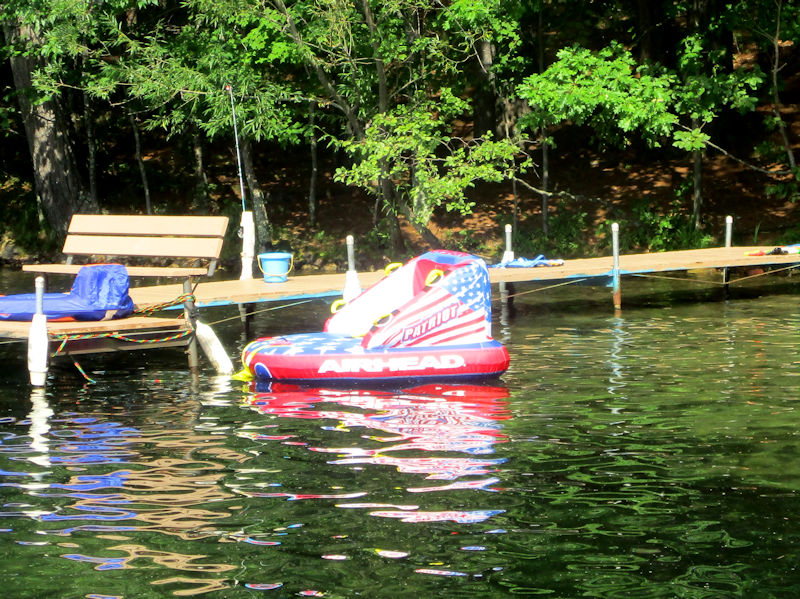
We consider this to be a Modern American Classic -- what company could have branded its cute floating toy for children a 'Patriot Airhead'. (Not that we're offended at all.)
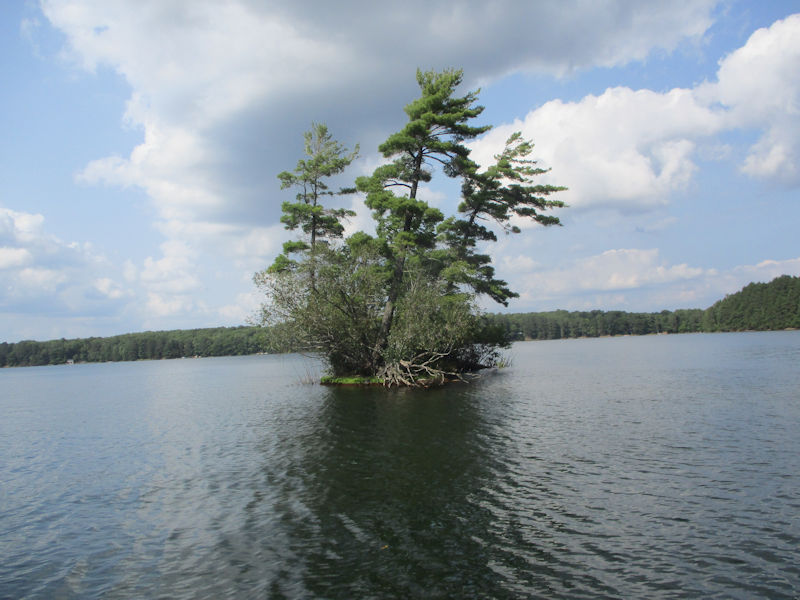
A last shot (for today) of Baby Leigh, always reminding us of an 18th century pirate ship with leaves on.

We're cruising the Sandy Beach bay (lamentably called 'Manila Bay' on the map below), verging on tears over this fallen erosion victim (a 'martyr' to us!), but with an eye to anything noteworthy cruising past us in the shallows . . .
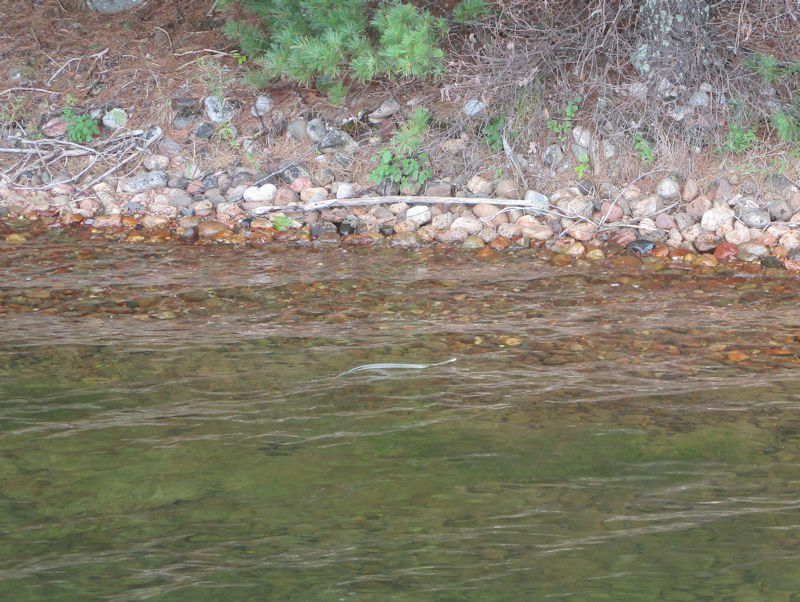
Good Lord! -- like that! What on earth?
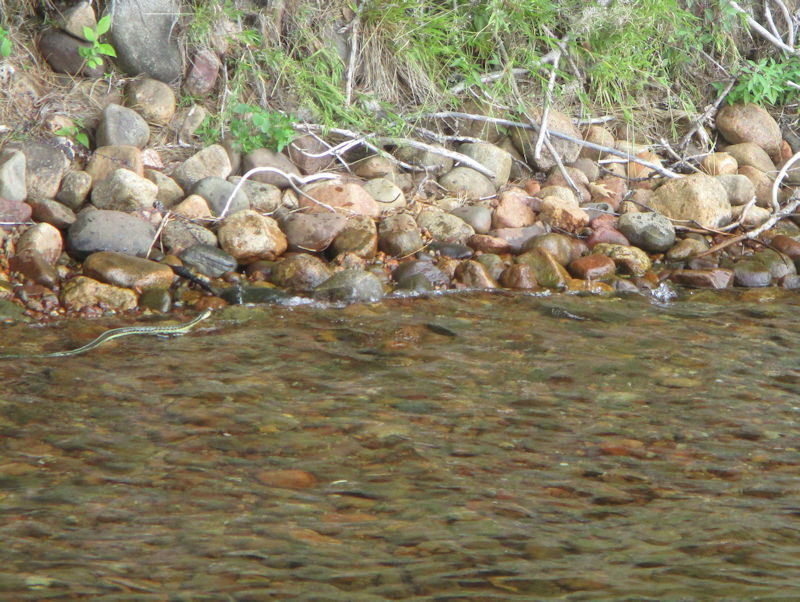
It can't be! Nobody told us about this. We swim here!

If we'd wanted to mingle with murderous water snakes, we could have moved to Africa or Indonesia. But so far, it hasn't noticed us. We're whispering.
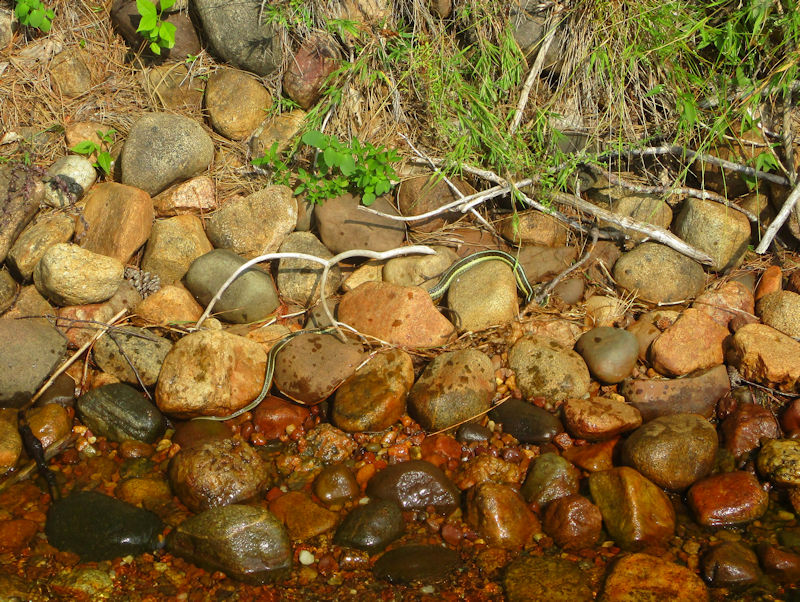
Notice that we're employing our high power Canon Powershot zoom feature to pretend that we're really investigating this squirmy beast close up.

Isn't that the diamond-head feature of the poisonous instantly-lethal species?
The great loosestrife showdown
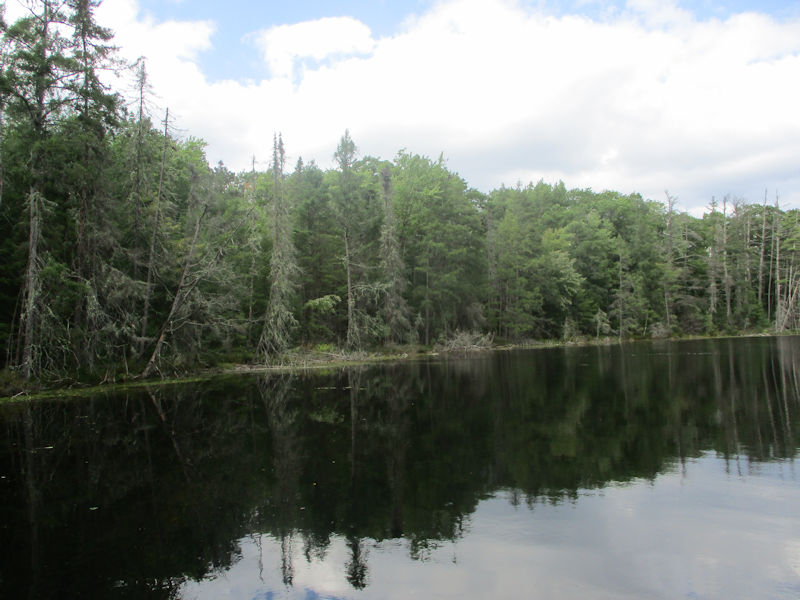
Moving on, we're passing through the mid-lake in the canal, aiming for . . .

. . . the second half of the canal there at the far end. That's the Forest Reserve visitors' bench just in the centre, easily missed at this distance (about 100 metres).
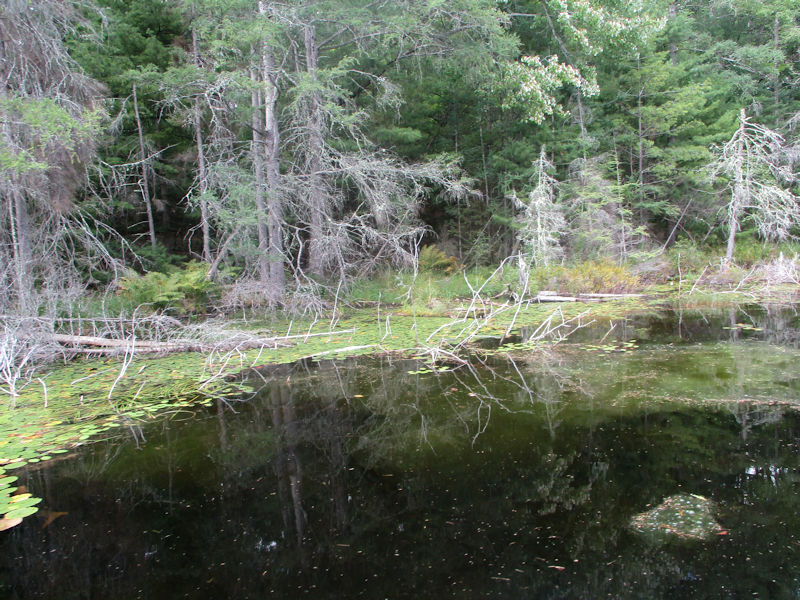
There are long-term vile purple loosestrife refugees hiding in these swamps -- we've been observing and neglecting them for years.

There's one lot, just there. Grown over the years into Invasive Weed Arrogance. We know people (includng my wife) who've tried to get to them from the land side, but there isn't any land side, and it's taken as a given that the water side is loose mud down 50 metres or so.
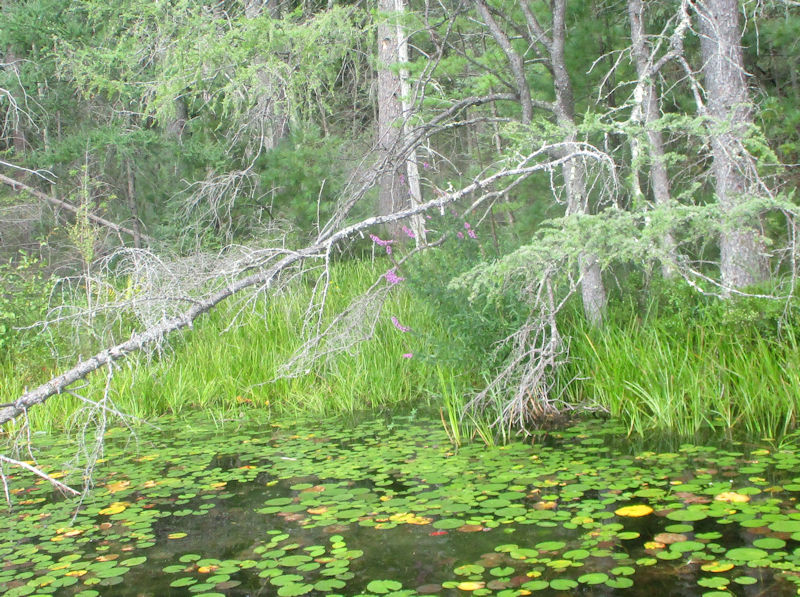
And that's the other legendary predatory mini-monster of loosestrife. We, like everyone else over the years, pass them by with twinges of misgivings.
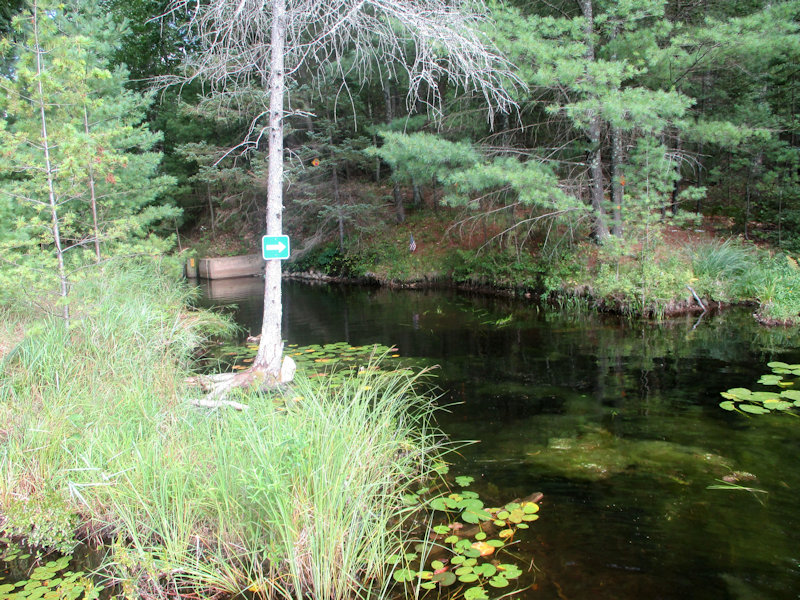
Now for the rest of the canal. The arrow points to the bypass for winter snowmobiles that wouldn't be able to negotiate the culvert.
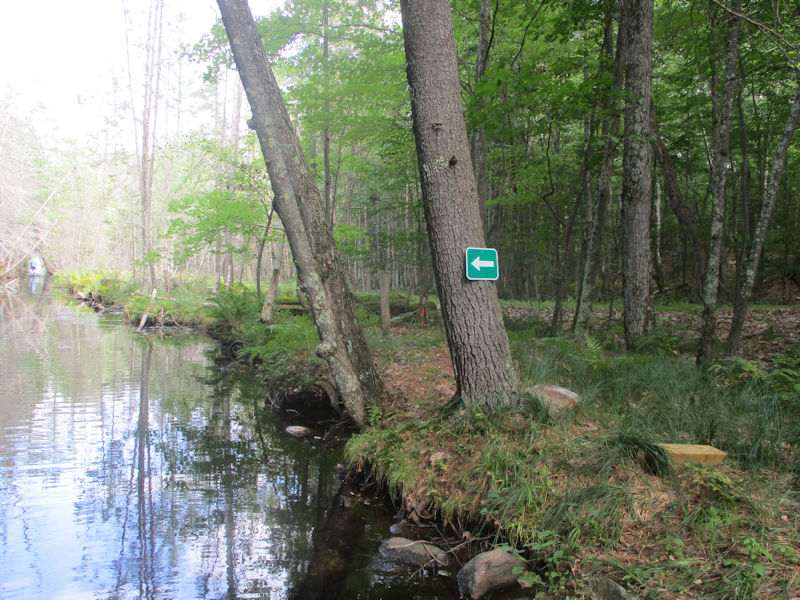
Once over the road atop the culvert, the hardy snowmobilers can here rejoin the canal and proceed to the next point of reinvigorating refreshment.

The lovely canal, as welcoming as always
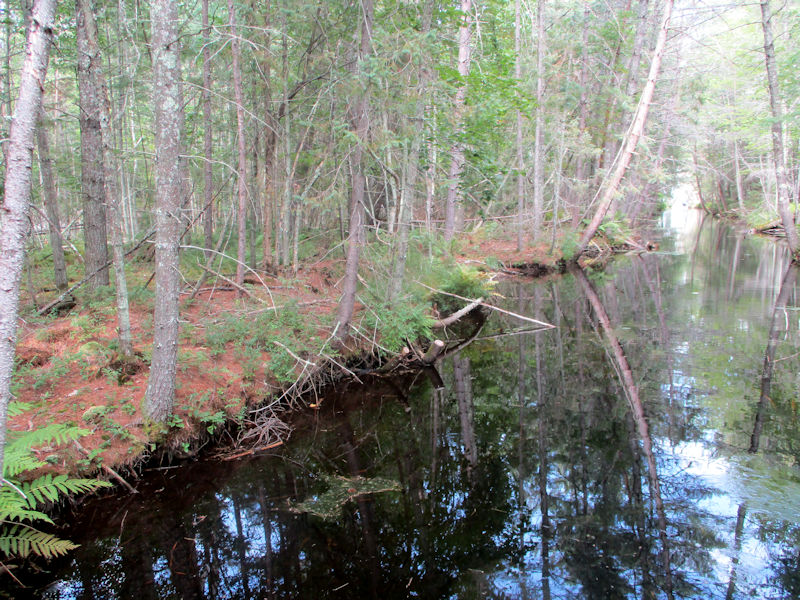
Don't daydream, keep focused. Peer into the depths -- there are horrors lurking to remove your propeller.
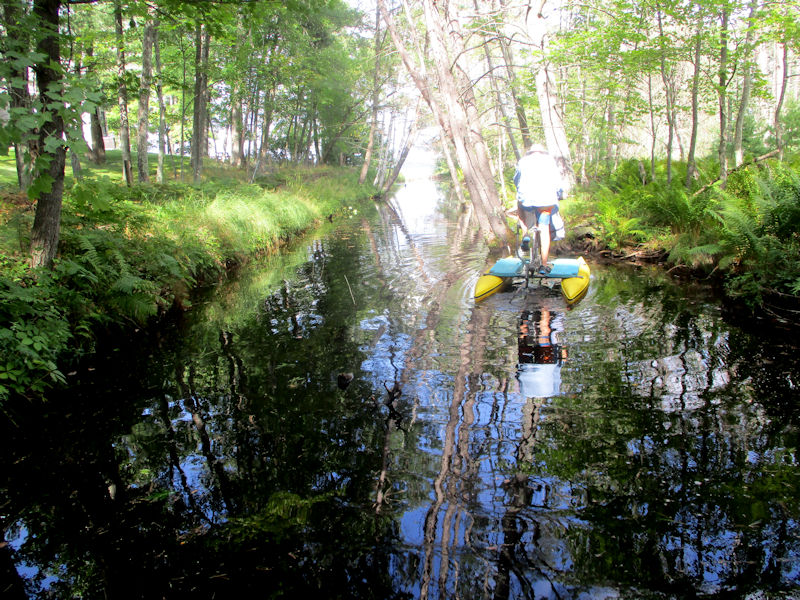
We're stuck! Were stuck, but struggled free. Three weeks later we got potentially permanently snagged there by underwater tree pieces with many outreaching propeller-grabbing tentacles. That episode will be memorialized in the fullness of time.

This loosestrife fanatic is demonstrating his devotion to weed-duty, whilst we leap over into the farther lake to get a view of how our spillway is holding up.

The last time we were here, our lake was gushing out of a break low down on the right side of it, but would you believe it, it seems to have been repaired. By somebody.
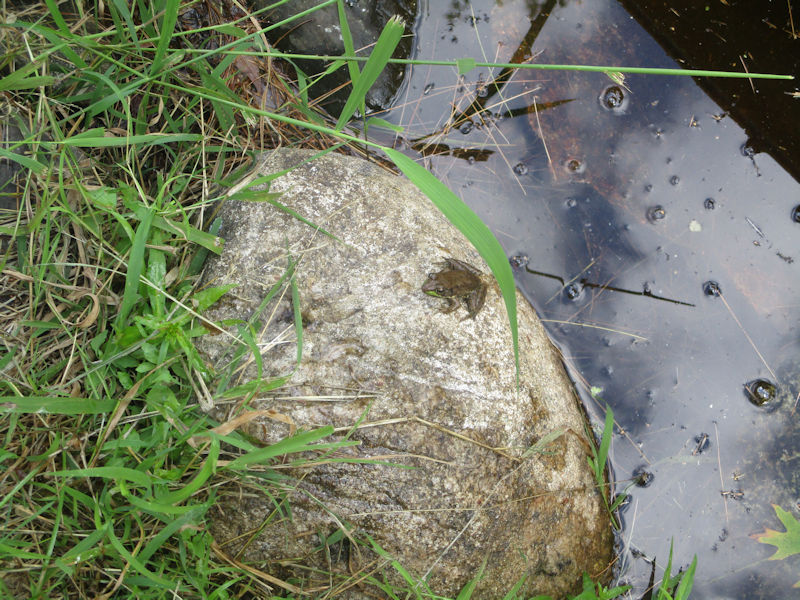
A potential stowaway -- we nearly squoozed him, but happily we reacted with astonishing agility.
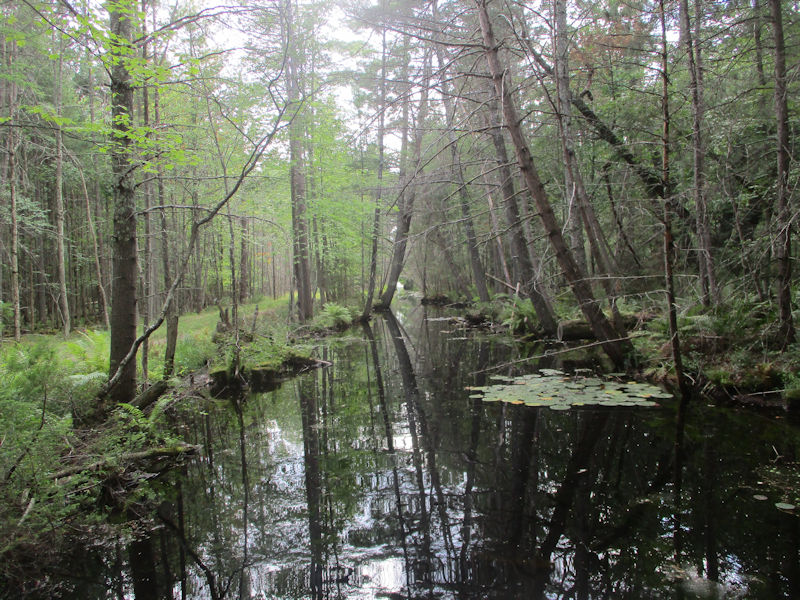
Back down through the dark, forbidding water
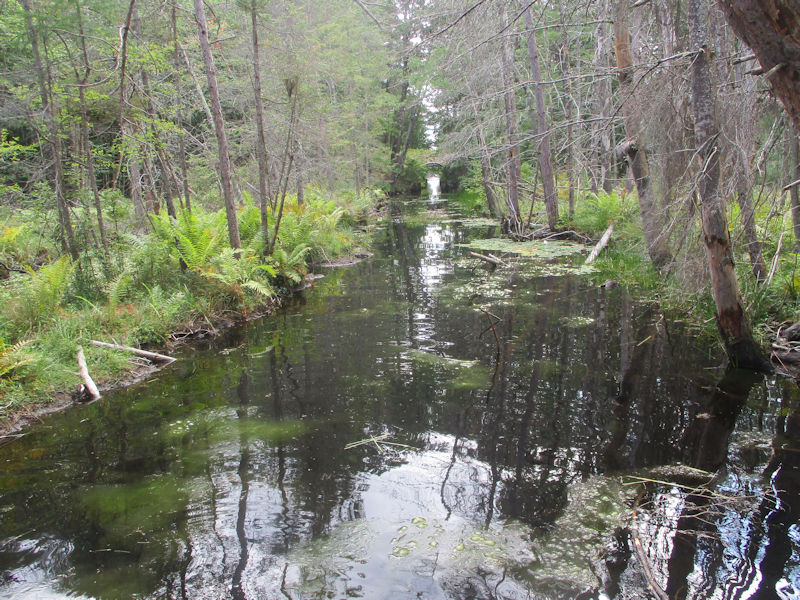
A careful eye to whatever's just visible under the surface -- it's like playing dodgeball evading the debris.
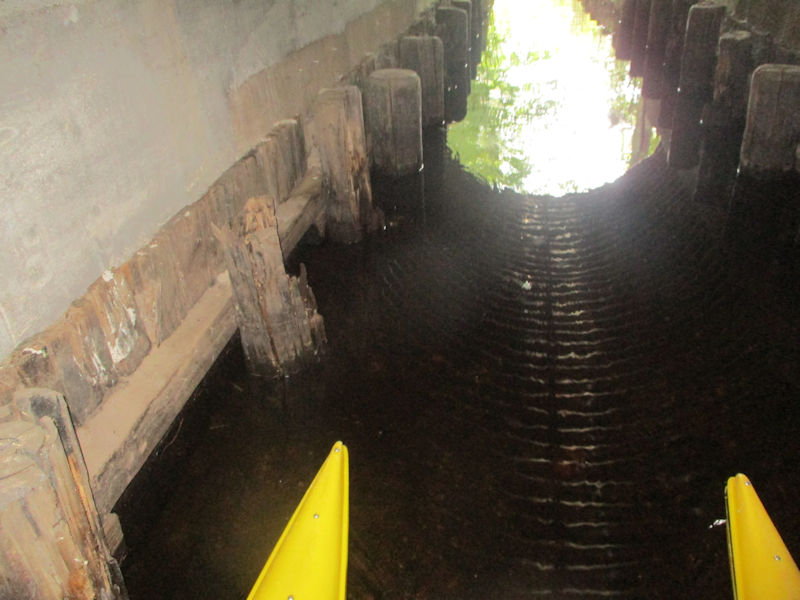
Under the bridge, or presently, the culvert -- those culvert ribbings below are reflections from above.

Out the other side
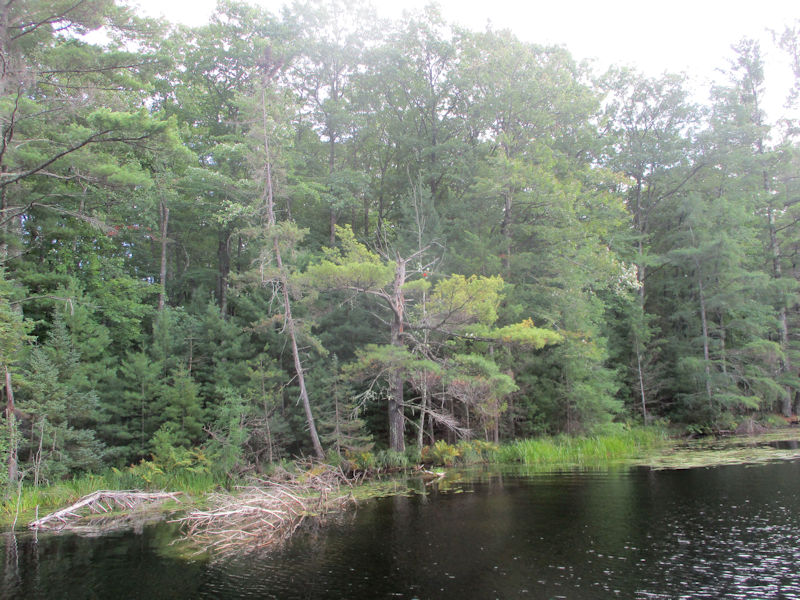
We're drifting about, admiring the wonders of nature, awaiting the rest of our party.
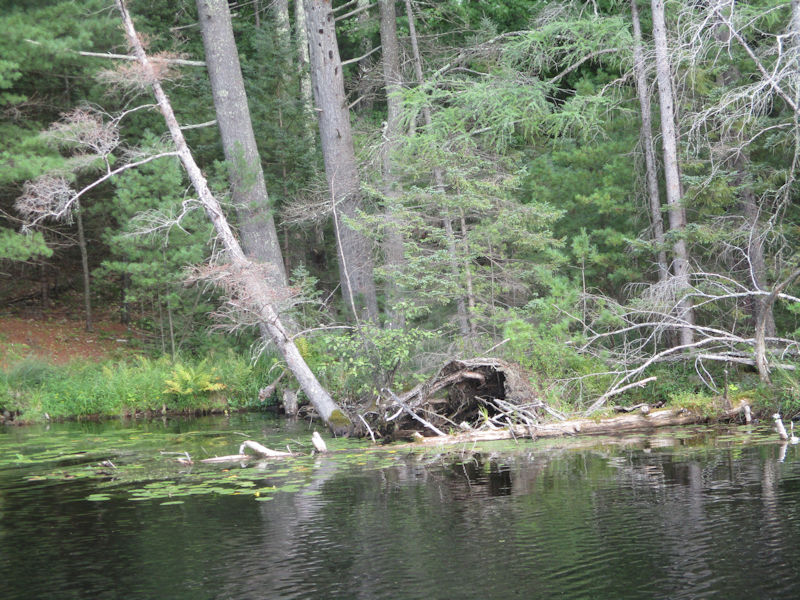
The rest of our party is taking longer to catch up than usual.
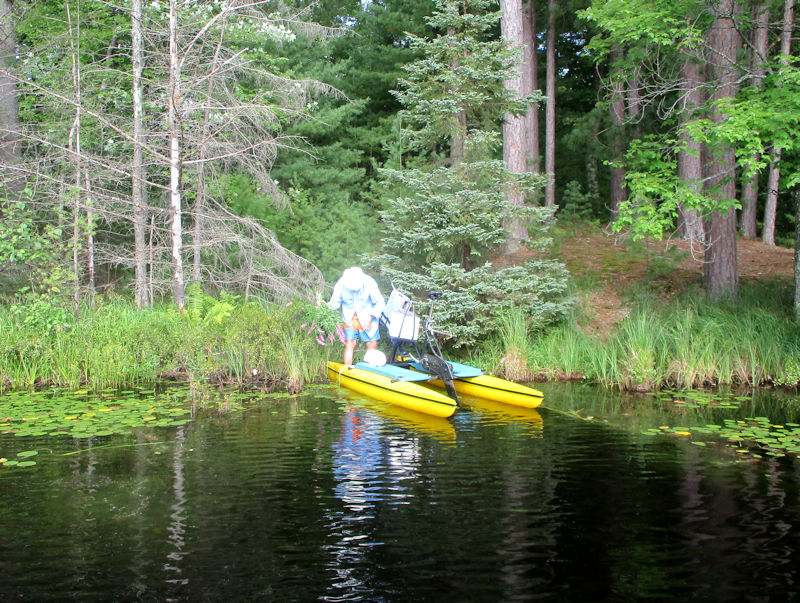
Well, the rest of our party has decided to go for the main prize. This veteran clump of purple loosestrife has discouraged small platoons of weedpullers over several years, but Cousin Rob is ready for the challenge.

One huge clump down, in the black bag, and now onward for the other one

There's virtually no bottom to the muck here, and stepping off the bike would be a life-altering mistake.
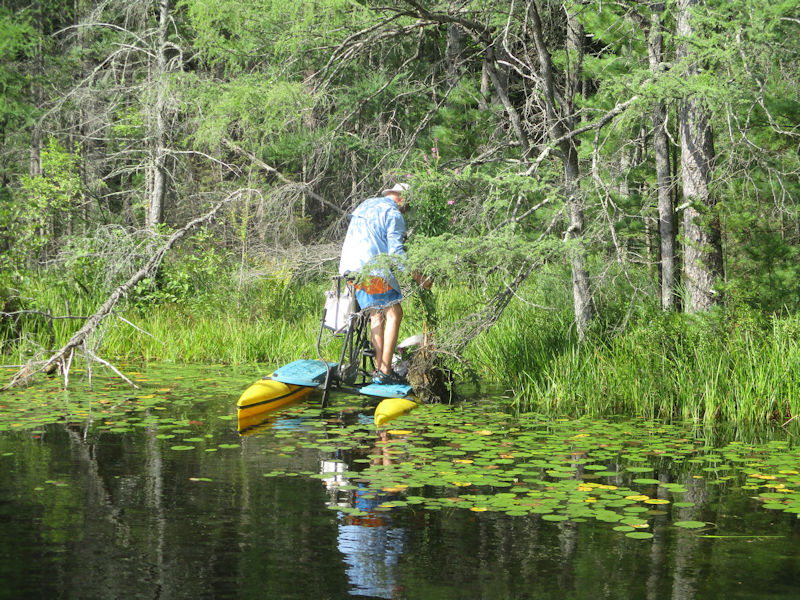
The roots are putting up a prodigious battle, but they are losing.
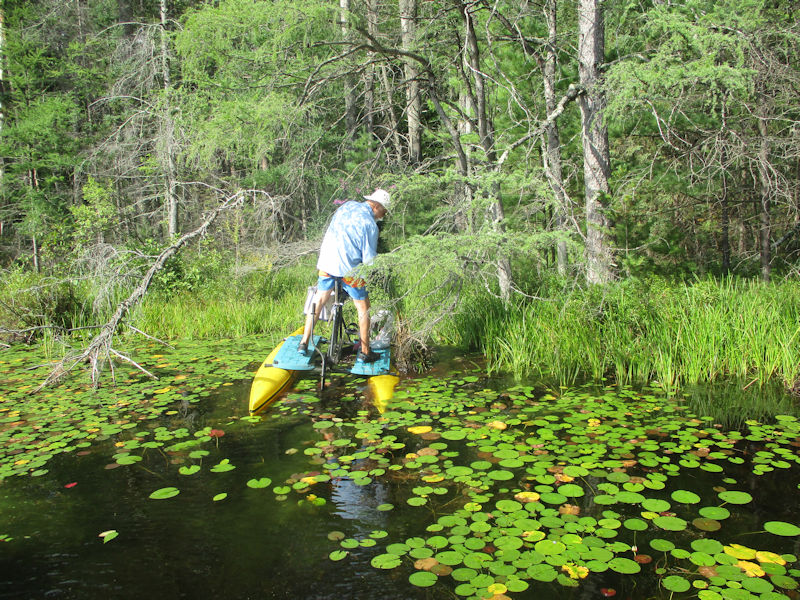
The vile weed is hanging on, to the last root.
Mussent Point is at no. 12.
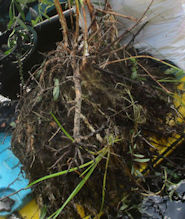 Dwight Peck's personal website
Dwight Peck's personal website

